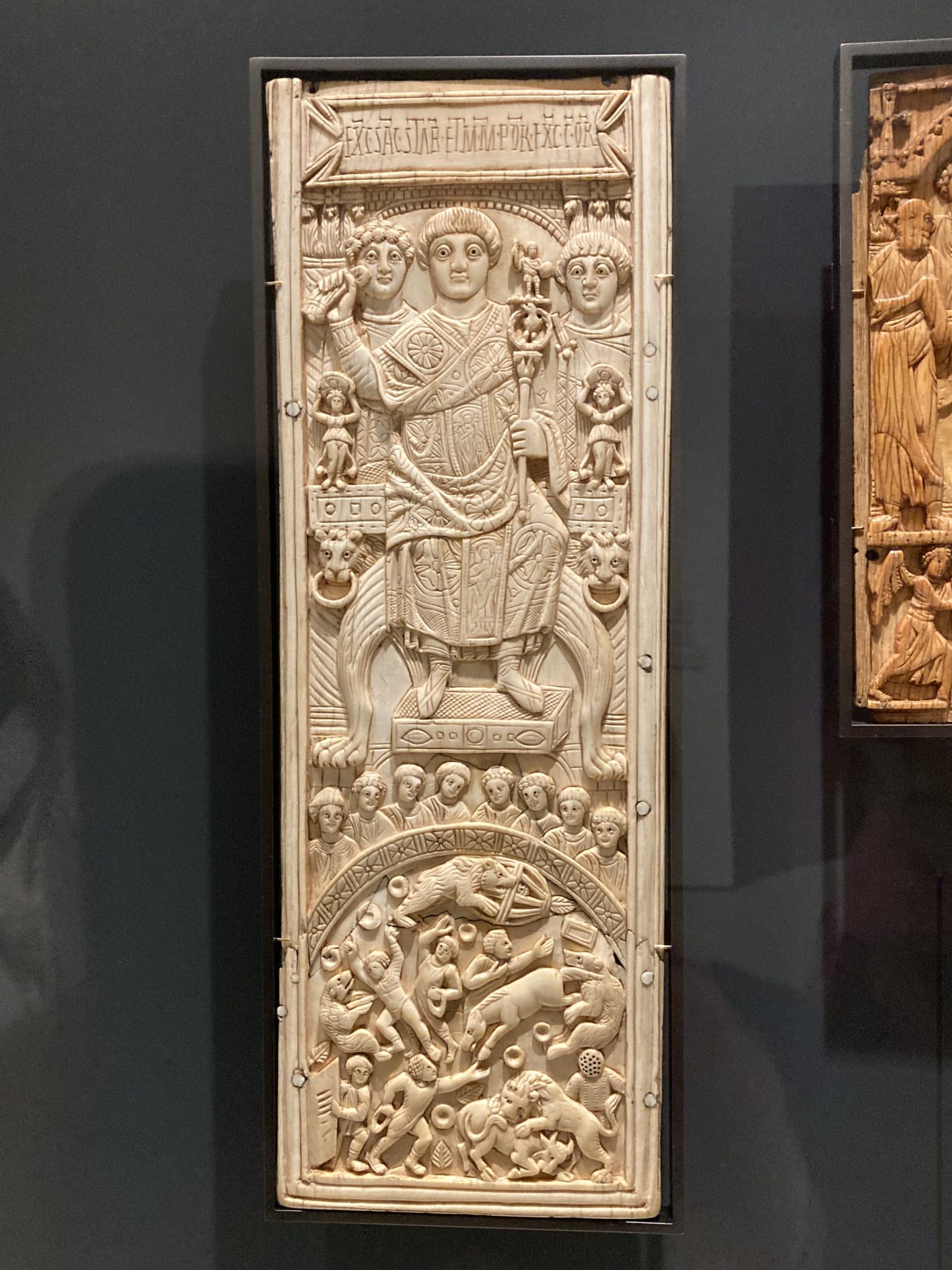
Devant une tribune, write the Cluny Museum Experts, paré de ses insignes, Areobindus est entouré d’assesseurs. La main droite levée, il lance les jeux avec la “mappa”, sorte de linge qui servait à signaler le début des jeux du cirque. En dessous sont représentés ces jeux : des gladiateurs combattent des animaux sauvages. On the 10th of May, 2023, I was in Paris, at the Cluny Museum, paying my respects to Consul Areobindus Dagalaifus Areobindus. It was a moment I will always cherish! https://www.musee-moyenage.fr/collection/oeuvre/diptyque-du-consul-areobindus.html
Let’s answer some questions starting with Who, What, Where, When, Why, and How…
What do we know about Late Roman / Early Byzantine Consular Diptychs? They were a form of ceremonial and commemorative artwork that originated in the late Roman Empire. They were created in the form of hinged wooden panels, often covered in ivory or other valuable materials. Consular diptychs typically consisted of two panels, known as leaves, which were decorated with relief carvings and inscriptions. These diptychs were presented as gifts to friends and supporters, by newly appointed consuls, who were the highest-ranking officials in the Roman Empire. They served as a record and celebration of their consulship. The inscriptions on the diptychs included the consul’s name, the names of the emperor or emperors in office during their consulship, and sometimes additional details such as the consul’s accomplishments or notable events from their term.
What do Consular Diptychs usually feature as their decoration? They often featured intricate and detailed relief carvings depicting various scenes, including mythological figures, military victories, and allegorical representations of virtues. These carvings were highly symbolic and conveyed messages of power, prestige, and legitimacy. Many consular diptychs have been lost or damaged. However, a number of surviving examples provide valuable insights into the art, culture, and political context of the late Roman / Early Byzantine Empire. They are significant historical artifacts that shed light on the individuals who held the highest offices in the Roman / Byzantine state.
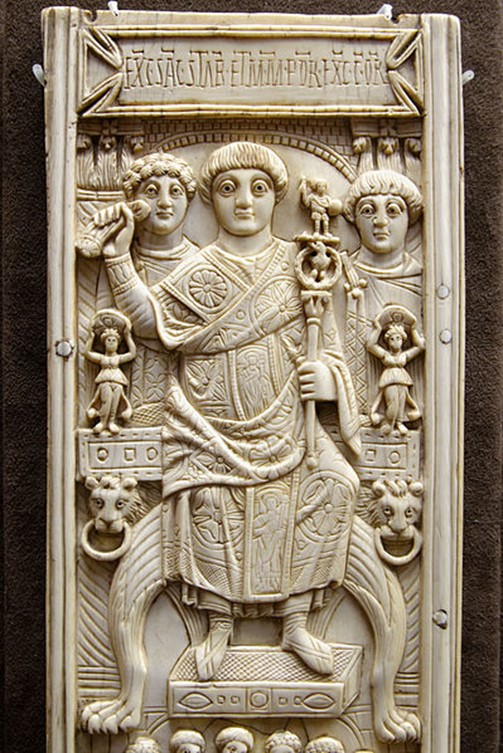
Who was Consul Areobindus? Areobindus Dagalaifus Areobindus was a high-ranking Byzantine official and military leader during the reign of Emperor Anastasius I Dicorus (c. 431 – 518) in the 6th century AD. Areobindus was a scion of an extremely distinguished family of Roman and Alanic-Gothic heritage. He was married to Anicia Juliana, the daughter of Olybrius, briefly the western Roman Emperor in 472, and his wife Placidia, thus, connecting Areobindus to the Theodosian dynasty. Along with his wife, considered to be the most aristocratic and the wealthiest inhabitant of Constantinople, Aerobindus spent a life of military and administrative distinction. In 506 AD, he served as consul of the Byzantine Empire. The consular office, though it had lost its administrative functions by this time, was still an important honorific title. The period of Areobindus’s consulship corresponded with the early period of Byzantine history, which was characterized by frequent wars with Sassanid Persia, the Germanic tribes, and other neighbors, as well as a flowering of Greek and Roman art and culture.
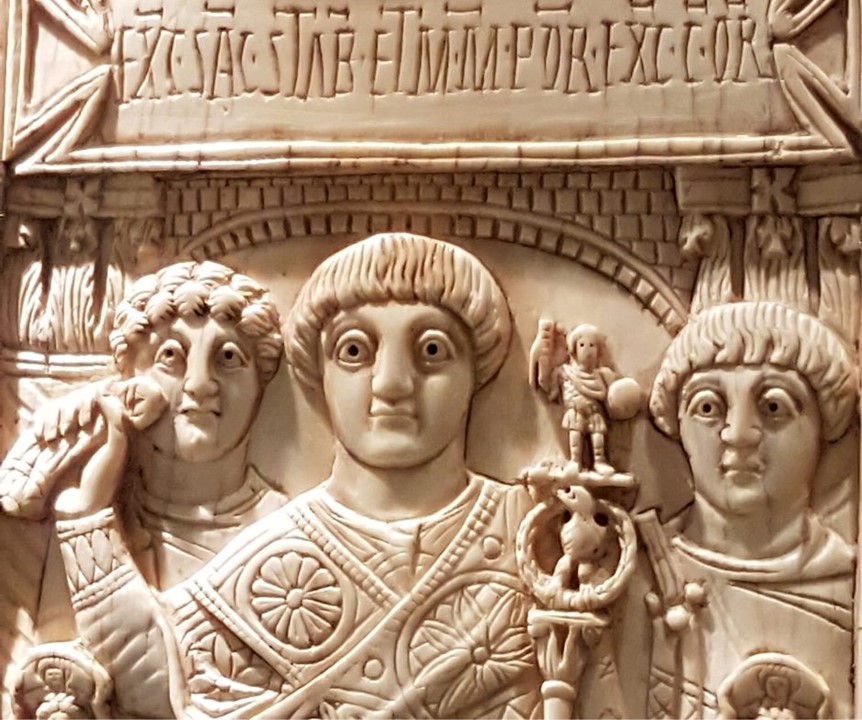
When was the Consular Diptych of Areobindus created? It was created in 506 AD, in Constantinople, when Areobindus was elected Consul of the Eastern Roman / Byzantine Empire.
How can the composition of Areobindus’s Diptych be described? Areobindus’s Consular Diptych is one of the best preserved and most intricately designed examples of Byzantine Consular Diptychs. Under the inscription C[omite] SAC[ri] STA[buli] ET M[agister] M[ilitum] P[er] OR[ientum] EX C[onsule] C[onsul] OR[dinarius] the artist of the Diptych presents Areobindus, in strict frontality, dressed in consular robes and holding the traditional symbols of the consul’s office, including a mappa circensis (a handkerchief with which the Consul gave the signal for the games to commence) and an elaborate scepter. Flanked by two of his assistants, the Consul is depicted presiding over the circus games sitting on a luxurious chair with curved legs and no back. The quality of the carving and the level of detail in this scene attest to the skill of the artist and the luxury of the object.
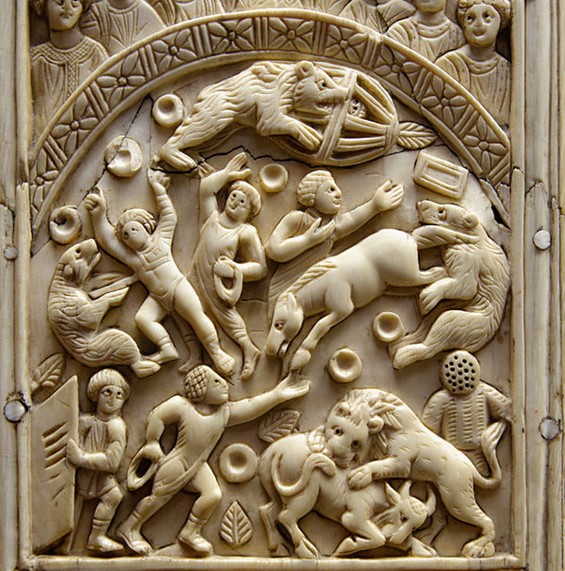
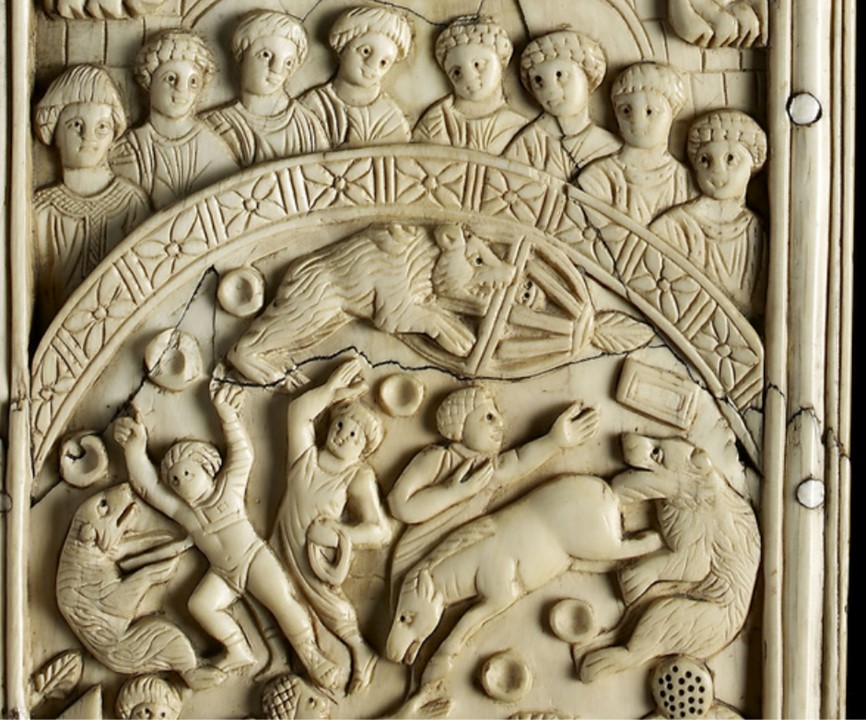
The lower part of the described Diptych depicts scenes of circus games, typically referred to as the venationes. These were staged hunts or fights involving wild animals, a popular form of public entertainment, at the time, alongside chariot races and gladiatorial combats. The venationes depicted in the Areobindus Diptych, showcase a range of exotic and dangerous animals, symbolizing both the consul’s power and the grand spectacle of the games themselves. It is a surprising, delightful scene. The artist exhibits originality, energy, and an unexpected variety of poses and gestures.
Why is the Consular Diptych of Areobindus significant? Simply put, it serves as an exceptional example of Early Byzantine artistry and craftsmanship. Its intricate relief carving depicts an important historical figure of the time, providing valuable insights into the iconography and symbolism of the era. It also serves as a tangible connection to the tradition of Consular Diptychs, which were presented as gifts to high-ranking officials or distributed during official ceremonies. It exemplifies the use of art and objects as a means of political communication and the display of status and authority during the Early Byzantine period.
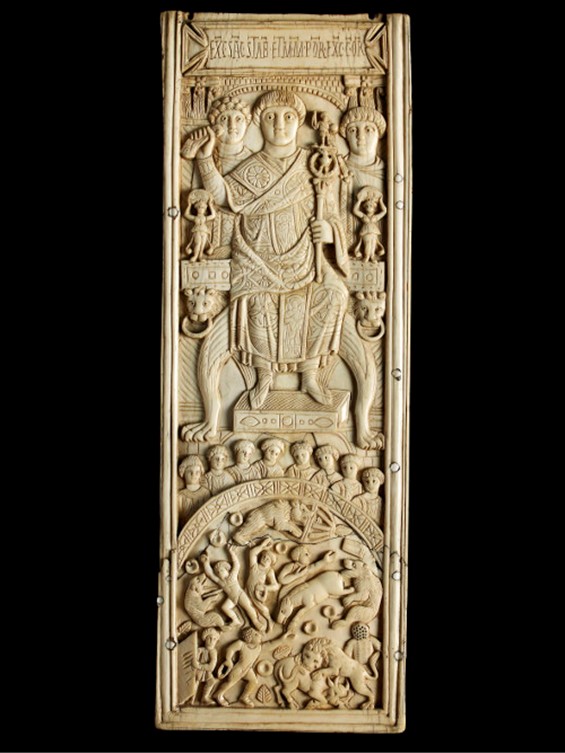
Where is the Consular Diptych of Areobindus currently located? The Consular Diptych of Areobindus is an invaluable resource for historians studying the Byzantine Empire and the broader late antique period. It is an artifact that connects us directly with the people, events, and cultures of the past. It is part of the Louvre Museum Collection, but it is exhibited in the Cluny Museum, also known as the Musée National du Moyen Age, in Paris.
How can the Cluny Museum best be described? The Musée de Cluny, also known as the Musée National du Moyen Age, or the National Museum of the Middle Ages, is located in Paris, France. It is housed in two significant historic buildings: the 15th-century Hôtel de Cluny and the Gallo-Roman thermal baths dating back to the 3rd century. The museum is renowned for its extensive collection of medieval artifacts, including tapestries, sculptures, manuscripts, and metalwork. Its most famous work is arguably the “The Lady and the Unicorn” series of tapestries, a masterpiece of the late Middle Ages.
The architecture of the museum itself is notable. The Hôtel de Cluny is a fine example of late medieval secular architecture, with its Gothic-style features and well-preserved rooms. The adjacent thermal baths showcase the grandeur of Roman architecture and provide an interesting contrast. The museum is also known for its medieval-inspired gardens. These gardens are designed based on medieval texts and archaeological research and serve as a quiet oasis in the bustling city of Paris. As a whole, the museum provides a unique experience for visitors to immerse themselves in the rich history and culture of the Middle Ages, serving as a testament to the creativity, skill, and artistry of the period.
For a PowerPoint inspired by the Consul Areobindus Dagalaifus Areobindus BLOG POST, please… Check, HERE!
Photo Credits
https://www.musee-moyenage.fr/collection/oeuvre/diptyque-du-consul-areobindus.html
https://fr.m.wikipedia.org/wiki/Fichier:Areobindus_presides_over_the_games_MNMA_Cluny_13135_n03.jpg
https://www.facebook.com/photo?fbid=600976638725848&set=pcb.600976745392504